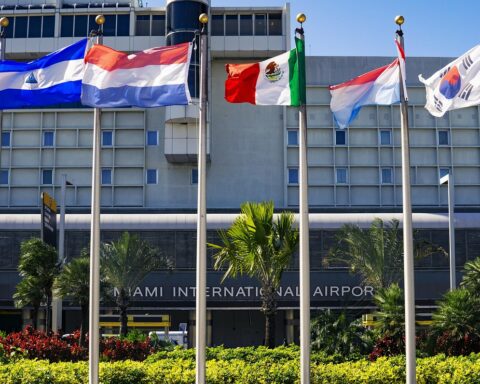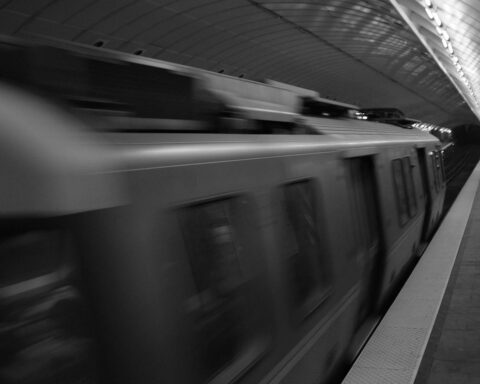In 2014, New York City began implementing a strategy called Vision Zero to reduce traffic fatalities. In the decade that followed, overall traffic fatalities in the city fell, but the impact was not felt equally across all of the city’s transportation modes, neighborhoods and demographic groups, a new study shows.
From 2014 to 2023, traffic fatalities fell 16% compared with the previous 10-year period, according to data analysis of New York City traffic fatalities by the groups Transportation Alternatives and Families for Safe Streets. Pedestrian fatalities saw the largest decrease at 29%, but motorist and bicycle fatalities increased slightly.
The positive impact also was not felt across all neighborhoods. Traffic fatalities from all transportation modes fell in majority-white neighborhoods, but in neighborhoods that are a majority Black, Indigenous and other people of color, fatalities rose 15%.
“Vision Zero is a critical program to save lives and improve New York City, but to be successful and save lives, our leaders need to implement this program with the financial resources, political backing, and urgency it needs,” said Danny Harris, executive director of Transportation Alternatives.

As part of Vision Zero, New York City installed more cameras to capture the license plate of any vehicles speeding. In 750 school zones, the city cameras would photograph any vehicles travelling more than 10 mph above the speed limit, and the vehicle owner would automatically receive a $50 ticket. Speeding has decreased 70% in corridors with cameras, according to data from the city.
The city overhauled street design to make it easier for bicycles and pedestrians to safely navigate and limit the risk of collision with cars and trucks. These efforts included adding bike lanes and pedestrian islands. Physical barriers also went up to protect the bike lanes from vehicular traffic.
Education and enforcement were also part of Vision Zero. Since 2020, drivers with excessive violations are required to take a driving safety course or face vehicle seizure and impoundment. Public school students also learn about traffic safety in school. At high-risk locations, Street Ambassador teams have been deployed to help promote safe habits by drivers and pedestrians alike.
The city also redesigned more than 1,200 intersections. In some cases, simple fixes were made, such as making intersections four-way stops instead of two or raising the crosswalk so pedestrians are more visible. At more than 250 intersections, the city changed timing on traffic signals to give pedestrians a head start. Instead of starting at the same time as parallel traffic, walk signs start 3-7 seconds earlier so drivers can already see pedestrians in the crosswalk before getting a green light.
New York City Mayor Eric Adams plans to continue upgrading 2,000 intersections each year, according to a November press release. “Protecting New Yorkers is my most sacred responsibility as mayor, and that holds true for traffic violence just as much as any other form of violence,” Adams said.
New York City is not the only place Vision Zero has taken hold. The principles have been implemented at more than 45 locations across the U.S. First developed in Europe in the 1990’s, Vision Zero’s mission is to prevent traffic crashes and the resulting injuries and deaths. The U.S. had the highest rate of traffic fatalities among 28 other high-income nations, a study by the Centers for Disease Control and Prevention found.
Vision Zero’s method involves accepting that humans will make mistakes while driving, walking or riding a bicycle, and transportation systems need to be redesigned to allow for human error without resulting in fatalities, according to its website. To accomplish that change, Vision Zero outlines nine components of a successful public safety strategy.
“Vision Zero’s principles clearly work,” said Sara Lind, co-executive director at Open Plans, a group that promotes street safety in New York City. “But we’re failing to apply them unflinchingly and equitably.”
To better implement Vision Zero, the authors of the New York City data analysis suggest design changes should be targeted to five streets responsible for the largest share of traffic fatalities. The analysis also noted adding more protected bicycle lanes would save lives.
“Vision Zero is a critical program to save lives and improve New York City,” said Danny Harris, executive director of Transportation Alternatives. “To be successful and save lives, our leaders need to implement this program with the financial resources, political backing, and urgency it needs.”
All news and information on this site is provided by the team at Strategic Partnerships, Inc. Check out this short 1-minute video that provides a quick overview of how we work with clients.












